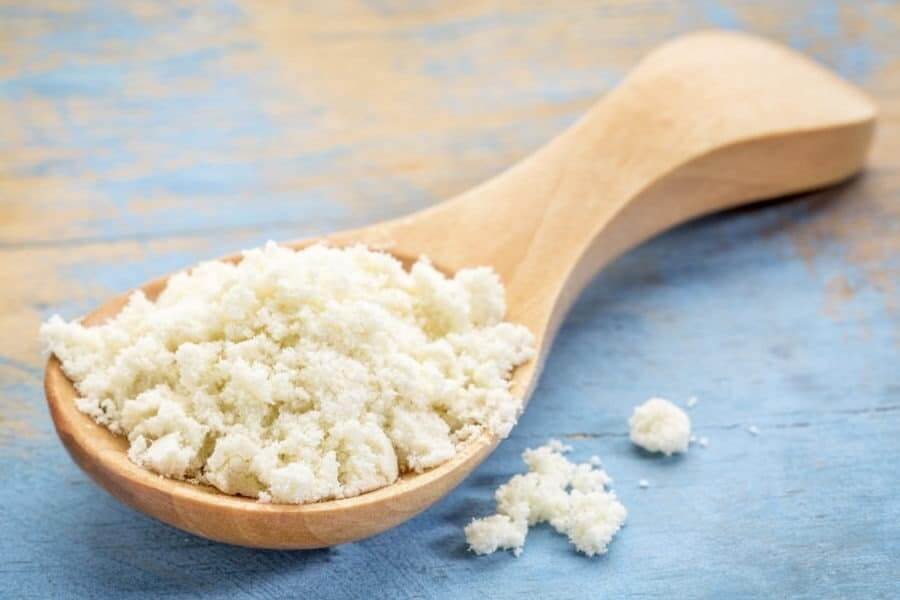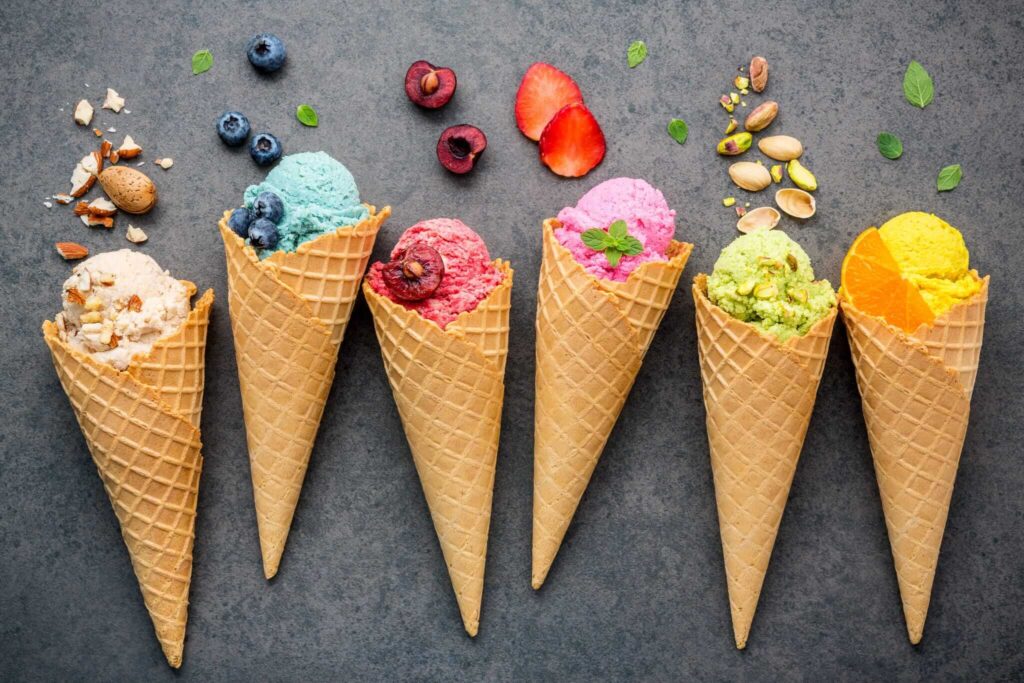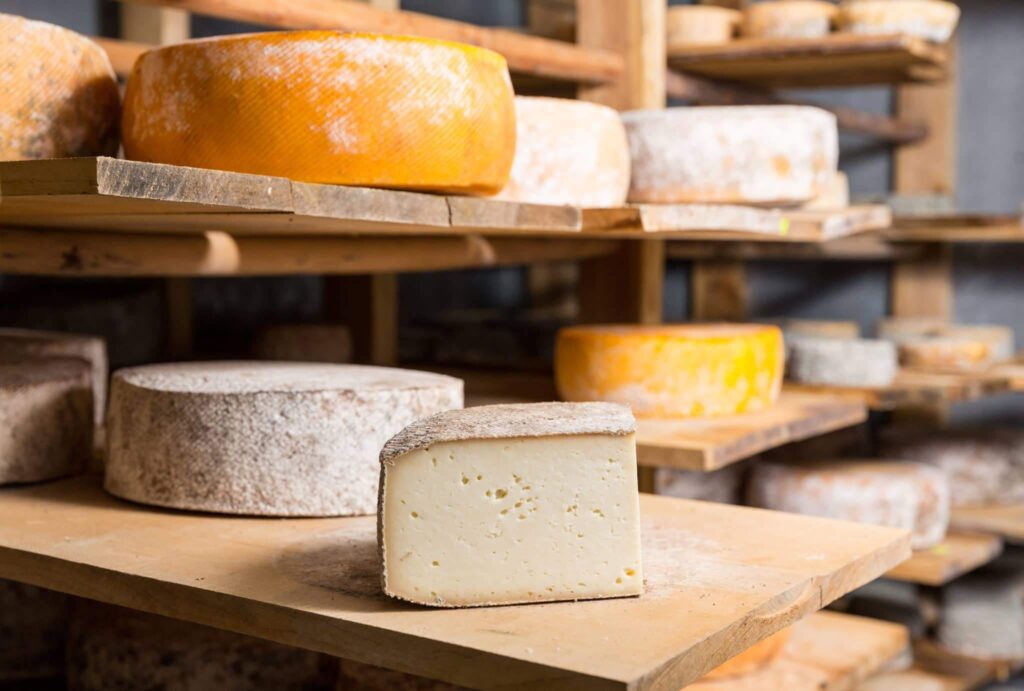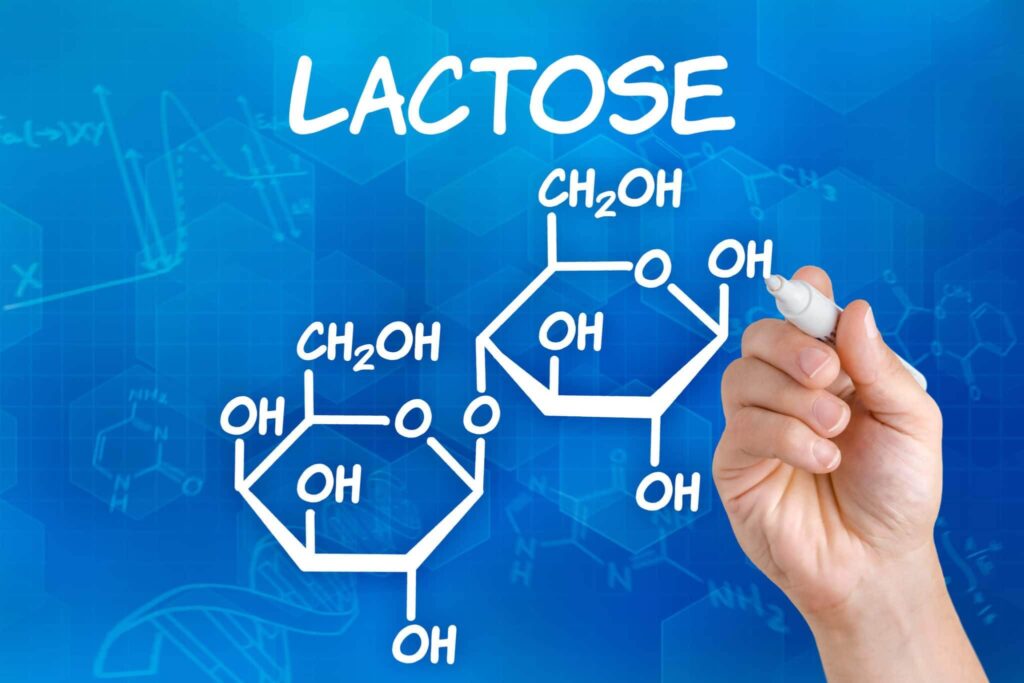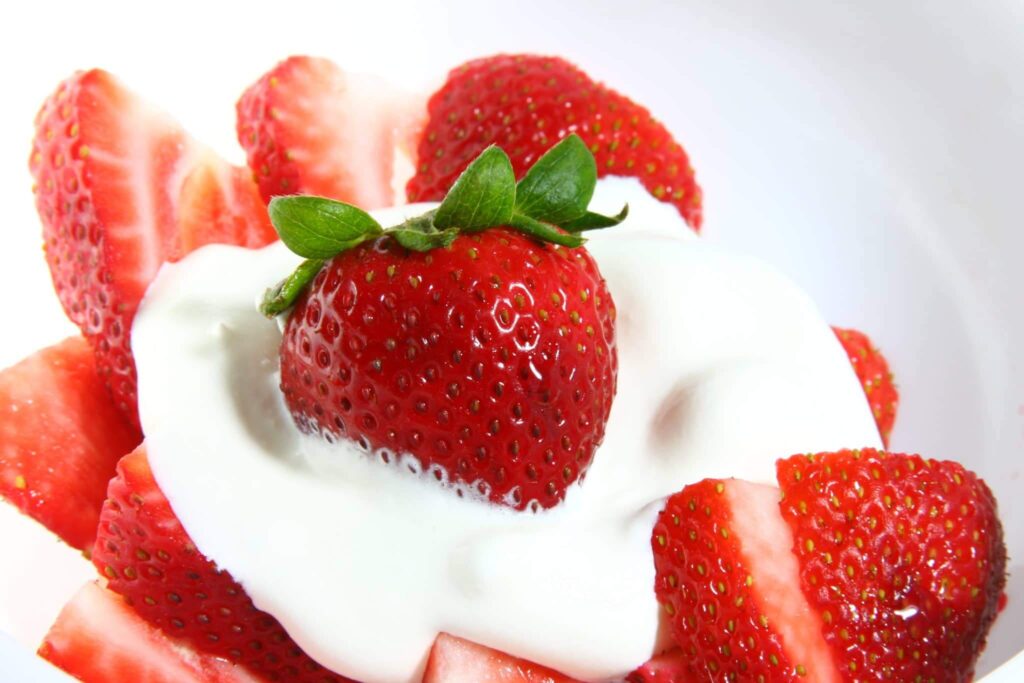
Cream
Cream is a dairy product that consists of the higher layer of yellowish fat that accumulates at the top of non-homogenized milk. This is skimmed off the top of the milk before homogenization.
The amount of butterfat in the cream determines how well the cream whips up and how stable it is. Cream with a higher fat content tastes better, has a richer texture and curdles less quickly when cooked.

For the best mixing solution we rely on our process knowledge of more than 80 years and our high quality sanitary design

Types of cream
There are a huge number of different types of cream; we highlight a few:
- Half-and-half
Half to half cream is a mixture that contains 1/2 whole milk and 1/2 cream. This cream is also often thought of as coffee cream. Half around half cream does not whip up but can be used instead of whipped cream in many recipes. - Single cream
About the same as half and half. Also known as coffee cream or table cream and often comes from semi-skimmed milk or even skim milk. Is whipped if it contains 30% butterfat, but is not very stable. Usually contains only 20% butterfat. Also known as simple cream. - Creme fraiche
It is an aged, thickened cream with a slightly tangy, nutty flavor and a velvety, rich texture. Its thickness can range from that of commercial sour cream to almost as firm as margarine at room temperature. In France, the cream is unpasteurized and therefore contains the bacteria needed to naturally thicken it. In America, where all commercial cream is pasteurized, the necessary fermentation can be obtained by adding buttermilk or sour cream. It is used as a topping in desserts and in cooked sauces and soups, where it has the advantage of not curdling when cooked.
Cream market trends
The global cream market was valued at USD 17.21 billion in 2020. The market is expected to grow from USD 17.56 billion in 2021 to USD 23.11 billion by 2028.
The growth is related to the improvement in the dairy cream development process. Companies are trying to increase their market share by adding new products and expanding their product range. Product innovation in particular plays a crucial role, as some consumers say they are satisfied with the taste of plant-based alternatives.
The ability to market a sustainable, environmentally friendly, green brand image can attract consumers. And it is an incentive for both producers and farmers to adopt more sustainable practices, and organic milk is used, for example. Companies operating in countries where the feed system is predominantly pasture-based have particular opportunities to capitalize on their green brand image when marketing their products. Moreover, several prominent companies operating in this field are focusing on launching organic products to attract more consumers.
Frequently Asked Questions
What is cream?
Cream is a dairy product formed from the higher layer of fat that separates from non-homogenized milk. It is skimmed off before homogenization and contains varying amounts of butterfat, which affects its taste and texture.
What are the different types of cream?
There are several types of cream, including half-and-half, single cream, and crème fraîche. Each type has different butterfat content and uses in cooking, with varying textures and flavors suitable for diverse recipes.
How does butterfat content affect cream?
The butterfat content in cream influences how well it whips and its stability in cooking. Higher fat content generally leads to better taste, richer texture, and reduced curdling during cooking, making it a preferred choice for many recipes.
What are the current trends in the cream market?
The global cream market is expected to grow significantly, driven by innovations in dairy cream production and the demand for organic and sustainable products. Companies focus on expanding their ranges to attract consumers, especially considering the taste of plant-based alternatives.
Why is sustainable branding important for cream producers?
Sustainable branding is essential for cream producers as it attracts environmentally conscious consumers and encourages adoption of sustainable practices. A green brand image can be leveraged to market organic products effectively, particularly in regions with pasture-based feed systems, enhancing marketability.
Food & Beverages Contacts

Tom Pruymboom
Sales Director
Area Worldwide

Bart Brouwer
Area Sales Manager
Area Worldwide

Sijko van der Veen
Application Engineer
Technical Specialist
Dairy – Related Articles

The introduction of crystallization in the mixing process for the dairy industry
Jongia Mixing Technology has initiated numerous mixing processes all over the world using her agitators. In some of these mixing processes, crystallization was a key factor in acquiring the desired final product. The process of crystallization is well-known in the

The Jongia Magitator: A multi-purpose magnetic agitator
To keep dairy or starch products homogeneous, the Jongia Mixing Technology Magitator, a magnet-driven agitator, is the right choice. In addition, this agitator maintains vegetable oil or juices at the right temperature. USP’s of the Magitator Opting for the Magitator

Jongia propellers are a valuable addition to the mixing process
Product friendly propellers are an indispensable part of our customers’ mixing process. Especially in the dairy industry, where slightly viscous liquids are mixed, it is very important that the products are not damaged during the mixing process. Jongia has unique



